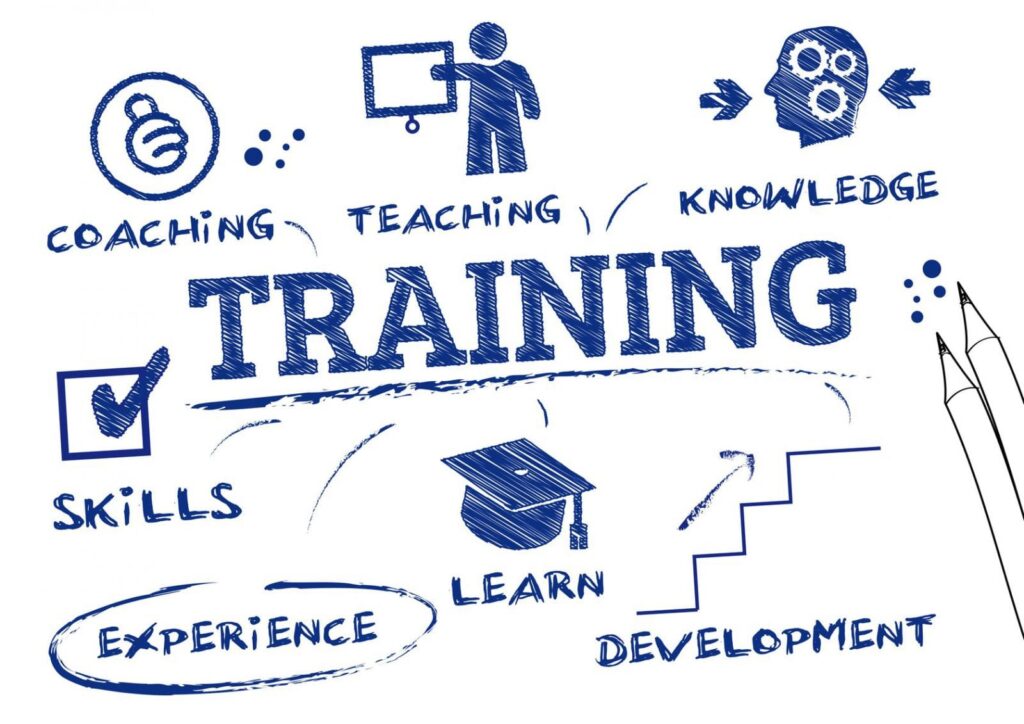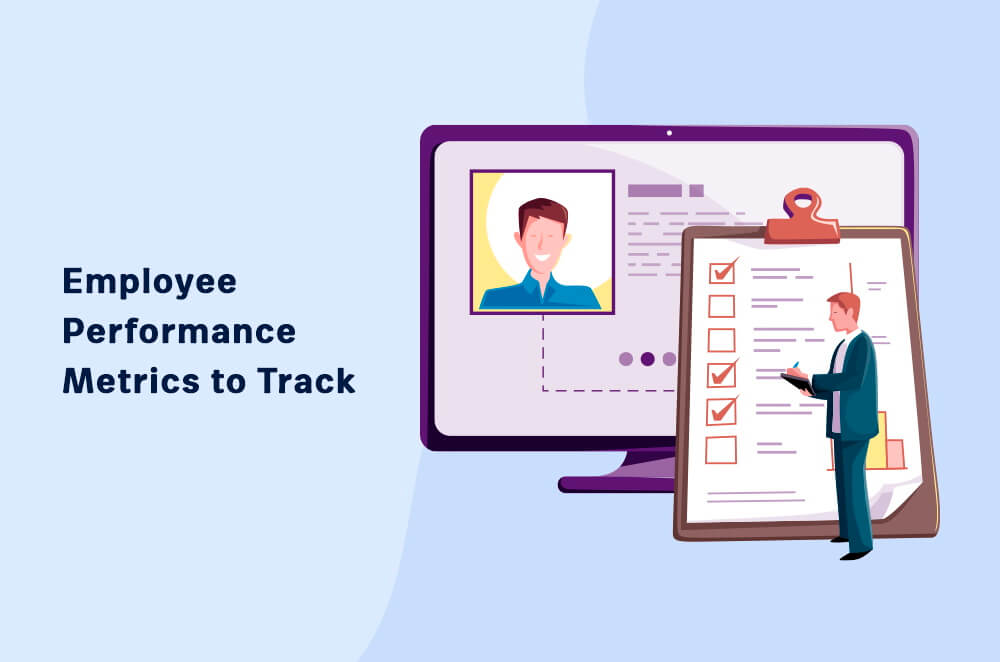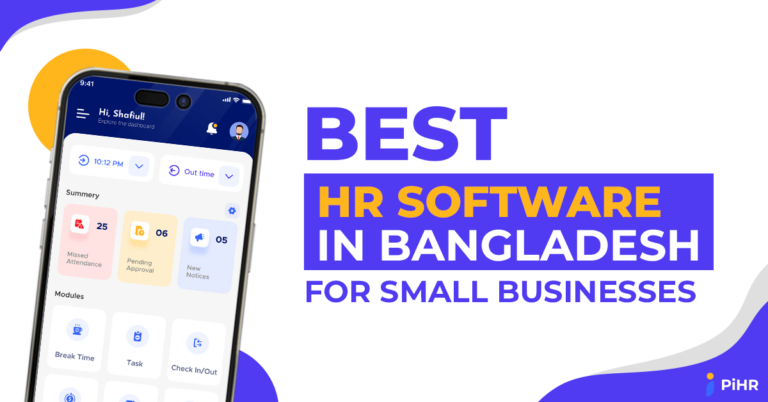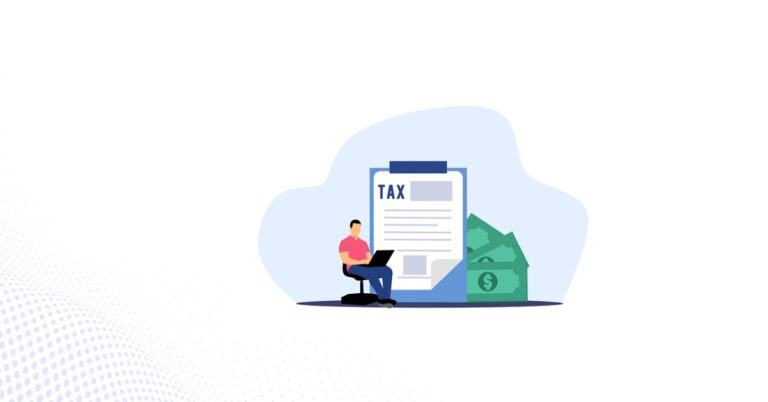Statistics show that 74% of employees have the willingness to learn new skills through training and development. Training and development are important to make employees skillful. Skillful employees have the chance to make fewer mistakes. The employees become more productive; the organization can be profitable.
However, finding when your employees need training can be challenging. There are several ways to find the need for training and development.
With many years of practice, HRs has developed strategic hr metrics. Those HR metrics can identify employee training and development needs.
What are Training and Development
Training and development is a set of activities to improve the skills and industry knowledge of existing employees.

Training and development can happen in many different ways, seminars, webinars, research, hands-on training, and more. What method would be most effective depends on the industry type. For an intense, any employee working on a digital media project may not need any physical training. In that case, online training can be suitable.
Training and development can be vital in maintaining quality and productivity in employees.
Training and development are vital for organizations like factories and operations. Moreover, training and development can provide certifications to employees. Certifications like IT training, medical training certificates, and many more.
What Benefits Does an HR Get From Arranging Training & Development for Employees?
Training and development can lead the organization to great benefits. Some importance is discussed below.
-
Increased Productivity
Productivity is one of the major benefits of training and development. Employees get better at doing their work efficiently and perfectly. Higher productivity means higher profitability.
-
Decreased Mistake Rate
With certain skills, employees will make fewer mistakes. Employees will be able to work with more knowledge and skills. Knowledge and skills will make them precise in what they do. As a result, the rate of mistakes will decrease.
-
Employee Morale Improvement
A lot of techniques can boost the morale of employees. It is a physiological fact that when employees see the organization thinking about them, their self-confidence increases.
-
Less Employee Supervision
Training and development create skilled employees. They don’t require monitoring from the supervisors. This frees up a lot of time for the manager giving them time to focus on different things.
-
Better Work Environment
Training and development can be focused on behavior. Well-behaved employees can make all the difference to the work environment.
-
Improvement in Employee Retention
Training and development improve employee retention. A lack of self-improvement is one of the biggest reasons why employees quit. However, after realizing the organization’s skill and development program, the employee has a high chance of staying.
7 Types of Key HR Metrics to Track Employee Training & Developments Needs
Having a well-developed strategy for finding employee training and development needs is crucial. So here are some hr metrics to identify employee training and development needs:
Read More: Top 10 Strategic HR Metrics You Need to Track
1. Setup benchmarks for roles
One of the very first things to do is set up benchmarks. Benchmark is the expectation of the organization towards an employee for certain roles.
HR personnel uses HR metrics in order to determine employee performance.
Benchmarking can determine what kind of skills are required for specific posts. It helps with duties and responsibilities and creates an overall job description.
On top of that, benchmarking will help the organization to identify the lackings among employees. And so necessary training session can be arranged.
2. Evaluate employee performance
Performance evaluation can provide the organization with a lot of different insights. Monitoring performance and comparing them with benchmarks can give a clear idea of where training and development are needed.
There are several ways of having a performance evaluation. Some common methods are:
- Management by Objective (MBO)
- 360-Degree Performance Appraisal
- Rating Scale
In modern times, there is some dedicated software to monitor and evaluate the performance of employees.
Performance evaluation can also suggest if any change needs in the organization.

3. Gain employee feedback
Reviews of an employee can be a good way to determine training needs. Since getting honest answers is important, anonymous feedback can be a viable option. If managers directly ask employees about the business processes and training programs, a clear answer may not come. They may feel pressured to give biased answers. Surveys can be relatively broad, but they can be a great way to get honest feedback. We encourage you to ask specific questions about your current training program.
Although performance reviews are not anonymous, they can also contribute significantly to employee feedback. If your employees are honest, they will give you an accurate idea of your personal training needs. For example, if an employee’s performance review shows poor performance, you can have a meeting to discuss if anything is wrong. Their reactions may indicate a lack of training and development.
4. Analysis

Analysis can provide a lot of data in the organization. The HR uses strategic hr metrics to determine the need for training and development. Performance reviews, job descriptions, and competitor analysis can provide useful data. The organization can make crucial decisions about the overall situation using this data.
There is a lot of software to conduct the analysis. One of the best hr software to track employee performance is PiHR. Analytical data can be helpful for many things rather than training and development. Analytical data can assist the organization with further improvement, let alone training and development.
5. Development plans
A personal development plan is essentially a combination of self-assessment and an action plan. Employees can analyze their strengths and weaknesses and use this overview to set goals and milestones. They identify actionable steps that can help you reach these goals and milestones. For example, sales representatives can identify their strengths and weaknesses. After that, finding opportunities to improve their knowledge of customer success management. They set goals like reaching a certain level of repeat purchases.
Employees then develop action plans, including research into customer success strategies.
A personal development plan can be an excellent means of increasing self-motivation. This also encourages self-development. It can help you identify employee training needs as it does a deep analysis of your own development needs.
However, a personal development plan can be a time-consuming way to get employee feedback.
6. Mentoring programs
Monitoring programs can refer to cooperative work between employees. Usually, an employee gets another experienced employee to mentor and develop skills. This helps with teamwork and collaboration in an organizational environment. The mentor, in this case, can assign small goals and tasks, monitor progress, and more.
A mentor can easily find the weakness and strengths of an employee as he is continuously working together.
A mentor can be for junior management, management trainee officer, etc.
7. Focus groups
A focus group is essentially a scheduled group discussion between employees. Focus groups often include an outside facilitator who oversees and guides the discussion. Internal facilitators can be biased in discussions. As a result, facilitators are usually hired from outside. The goal of focus groups is usually to get collaborative and honest feedback from other employees. Focus groups are usually aimed at encouraging constructive discussion and generating solutions.
When scheduling a focus group, the organization can choose which employees will participate. At the same time, provide the moderator with a list of topics for the group to discuss. Technically, focus groups can discuss any work topic. However, discussing the current training programs should be the main focus. A focus group can provide decent employee feedback on training and development programs.
To Sum Up
HR managers have developed a lot of ways to identify and implement training and development strategies. Strategic HR metrics and people analytics are helping to achieve such goals.
To know more contact us.












